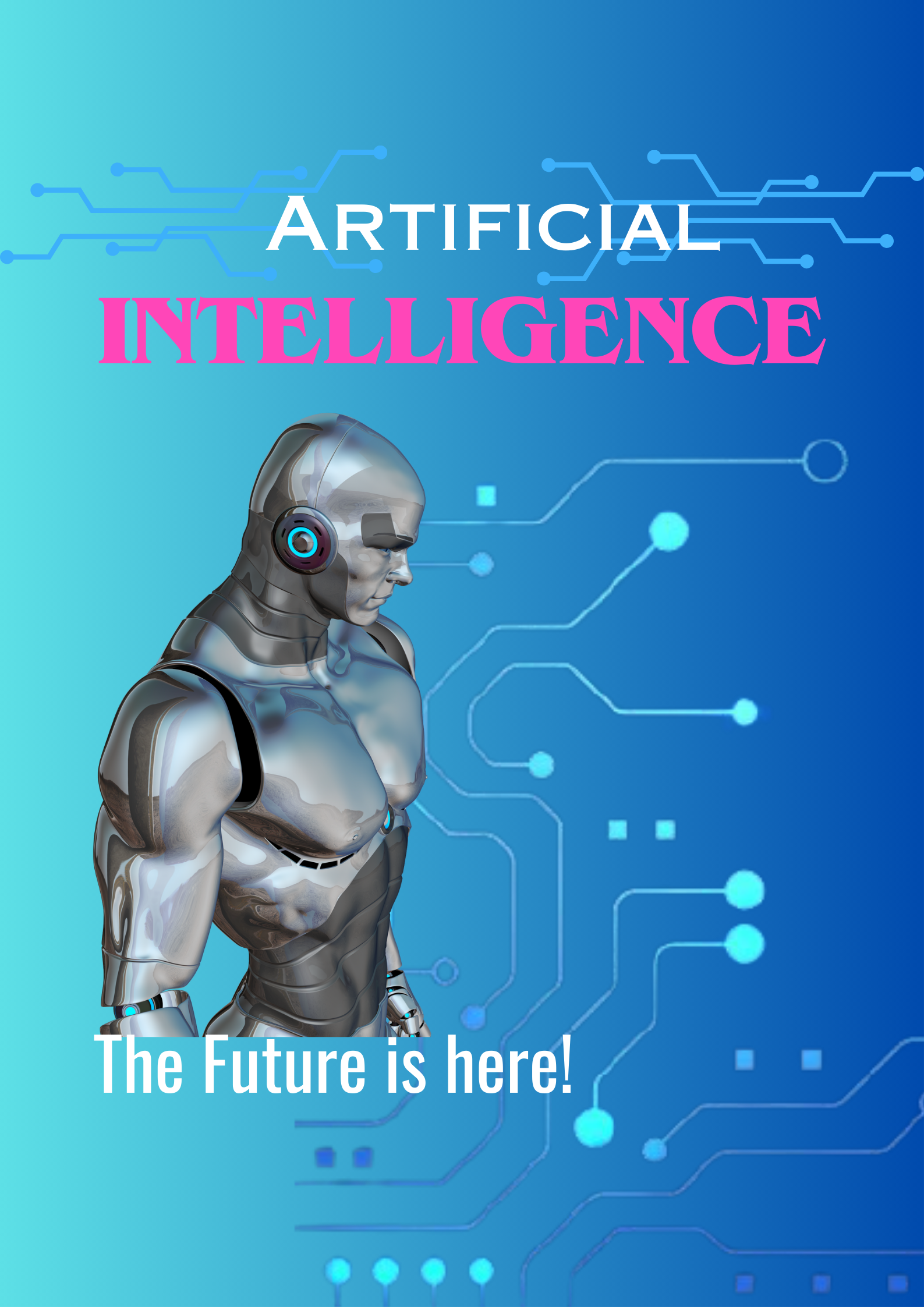Welcome to the fascinating world of Artificial Intelligence. In this beginner-friendly article, we’ll discuss about the basics of AI, its importance in today’s world, how it works, and its applications across various industries.
Understanding the Basics of AI
Artificial Intelligence (AI) is a computer science field which deals with creating machines that are intelligent enough to perform tasks that are typically performed with human intelligence. These tasks can include speech recognition, decision-making, problem-solving, and learning. To create an AI system developers need to work on the algorithms and models that enable a machine to process and analyze huge amounts of data.
It is important to know the different types of AI, to understand AI. It has two main categories:
- Narrow AI
- General AI.
Narrow AI, also known as Weak AI, is created to deal with specific tasks and is limited to a narrow domain.
Whereas, General AI deals with machines that have the ability to understand, learn, and apply knowledge across different domains.
Wide range of applications is contributing to AI’s increasing importance in today’s world. AI is being leveraged to improve efficiency, accuracy, and decision-making across fields be it healthcare, finance, transportation, security or entertainment. Artificial Intelligence has the potential to revolutionize various industries and transform the way we live and work today.
History of Artificial Intelligence
Understanding the history of Artificial Intelligence (AI) is crucial for several reasons:
Contextualizing Current Developments: The historical context provides a foundation for understanding the current state of AI. Knowing the evolution of AI technologies helps individuals comprehend the breakthroughs, challenges, and trends shaping the field today.
Learning from Past Mistakes: Examining the history of AI includes acknowledging periods of overhype and subsequent disappointments, known as “AI Winters.” Understanding the reasons behind setbacks helps guide realistic expectations and avoid repeating mistakes.
Appreciating Pioneering Contributions: Acknowledging the pioneers and early contributors to AI provides insight into the fundamental principles and theories that laid the groundwork for contemporary AI systems. This appreciation fosters a deeper understanding of the field’s intellectual roots.
Ethical and Societal Implications: The history of Artificial Intelligence includes instances where ethical considerations were not adequately addressed. Examining past cases informs ongoing discussions about the ethical use of AI, ensuring that current and future applications prioritize human well-being and societal values.
Navigating Ethical Challenges: Understanding the historical context allows professionals and policymakers to navigate ethical challenges in AI development and deployment. It helps establish ethical guidelines and regulations to mitigate potential risks associated with AI technologies.
Fostering Innovation: Learning from the history of AI inspires innovation by building on past successes and failures. Innovators can draw lessons from historical breakthroughs, creating more effective and responsible AI applications.
Predicting Future Trends: Historical patterns often offer insights into future trends. Studying the history of AI helps researchers, policymakers, and businesses anticipate potential challenges and opportunities, allowing for better strategic planning.
Educational Purposes: For students and professionals entering the field of AI, understanding its history is foundational. It provides a comprehensive background that aids in grasping theoretical concepts, technical advancements, and the evolution of AI applications.
Balancing Enthusiasm with Realism: AI has experienced periods of exaggerated expectations, leading to subsequent disappointments. Knowing this history helps individuals approach contemporary developments with a balanced perspective, fostering a healthy understanding of AI’s capabilities and limitations.
Encouraging Interdisciplinary Collaboration: AI’s history involves contributions from various disciplines, including computer science, mathematics, cognitive science, and neuroscience. Understanding this interdisciplinary nature encourages collaboration across fields, leading to more holistic and innovative approaches to AI research.
Emergenc of AI
1943: The first work which is now recognized as AI was done by Warren McCulloch and Walter pits. They proposed a model of artificial neurons.
1950: Alan Turing who was an English mathematician and pioneered Machine learning. Alan Turing published a paper called “Computing Machinery and Intelligence” in which he proposed a test. The test could check the machine’s ability to exhibit intelligent behavior equivalent to human intelligence, called a Turing test.
1955: Allen Newell and Herbert A. Simon created the “first artificial intelligence program” which was named as “Logic Theorist”. This program has proved 38 of 52 Mathematics theorems, and found new and more elegant proofs for some theorems.
1956: The word “Artificial Intelligence” first adopted by American Computer scientist John McCarthy at the Dartmouth Conference. For the first time, AI was coined as an academic field.
The researchers emphasized developing algorithms which can solve mathematical problems.
AI Winter
The term “AI Winter” refers to periods in the history of Artificial Intelligence when enthusiasm and funding for AI research was reduced, due to unmet expectations, overpromising, and under-delivering. There are two main AI Winters:
1974 – 1980: Due to lack of computational power.
1987 – 1993: Due to reduced funding from the government due to high cost and no efficient results.
Machine Learning Emergence
The late 20th century witnessed a shift in AI research towards Machine Learning, an approach where computers learn from data to improve performance on a task.
Researchers focused on developing algorithms capable of learning patterns and making predictions without explicit programming.
Machine Learning started making practical impacts, especially in areas like finance, healthcare, and data mining.
Decision trees, support vector machines, and clustering algorithms became popular for solving real-world problems.
Internet Revolution
The turn of the millennium brought with it an explosion of digital data, fueled by the rise of the internet and social media. Increased computational power and the availability of large datasets contributed to the resurgence of interest in deep learning
21st Century
Neural networks, especially deep learning models like Convolutional Neural Networks (CNNs) and Recurrent Neural Networks (RNNs), have become dominant in various AI applications.
Image recognition, natural language processing, and reinforcement learning have seen significant advancements fueled by neural network architectures.
Transfer learning, where models trained on one task are repurposed for another, gained popularity, reducing the need for massive amounts of labeled data.
Pre-trained models, such as OpenAI’s GPT (Generative Pre-trained Transformer) series, demonstrated the power of large-scale language models.
Significance of Artificial Intelligence in today’s world
The global market size of AI was valued at $136.55 billion in 2022 and is expected to grow exponentially year on year. It is projected to grow $1811.8 billion by 2030. Artificial Intelligence is important in today’s world due to multiple reasons. Primarily, it has the ability to automate repetitive tasks, allowing humans to focus on more complex and creative work. This can lead to increased productivity and efficiency in various industries. Businesses leverage AI-powered systems to streamline processes, reduce costs, and enhance operational speed.
Secondly, AI can analyze and interpret large amounts of data at a speed and accuracy that surpasses human capabilities. Businesses use AI to extract patterns and trends from data, enabling more informed and data-driven strategies.
Furthermore, AI has the potential to improve healthcare outcomes by assisting in diagnosis, treatment planning, and drug development. It can also enhance transportation systems by optimizing routes, reducing congestion, and improving safety. Additionally, AI-powered virtual assistants and chatbots are transforming customer service and improving user experiences.
Overall, AI has the power to revolutionize industries, improve the quality of life, and solve complex problems that were once considered impossible.
How AI works
AI works by using algorithms and models to process and analyze data. The process involves several steps, including data collection, data preprocessing, feature extraction, model training, and model evaluation.
Data collection is the first step, where large amounts of data are gathered from various sources. This data is then preprocessed to clean and transform it into a suitable format for analysis.
Next, feature extraction is performed to identify relevant features or patterns within the data that can be used to make predictions or decisions.
The model training phase involves feeding the preprocessed data into an algorithm that learns from the data and adjusts its parameters to optimize performance. This is often done using techniques such as supervised learning, unsupervised learning, or reinforcement learning.
Once the model is trained, it is evaluated using a separate set of data to assess its performance and make any necessary adjustments.
AI systems can be further enhanced through techniques such as deep learning, which involves training neural networks with multiple layers to extract complex features and make more accurate predictions.
It is important to note that AI models are not static and require continuous learning and improvement to adapt to changing data and environments.
Exploring the Applications of Artificial Intelligence
AI has a wide range of applications across various industries.
Healthcare: AI is being used to assist in diagnosing diseases, predicting patient outcomes, and developing personalized treatment plans. It is also being used to analyze medical images and detect abnormalities with high accuracy.
Finance: AI is being used for fraud detection, algorithmic trading, and risk assessment. It can analyze large amounts of financial data and identify patterns or anomalies that may indicate fraudulent activities.
Transportation: AI is being used to optimize traffic flow, improve navigation systems, and develop self-driving cars. It can analyze real-time data from sensors and cameras to make informed decisions and improve safety on the roads.
Customer service: AI-powered chatbots are used for customer support, answering frequently asked questions, and handling simple requests.
Entertainment industry: With virtual reality, augmented reality, and personalized recommendations, it can create immersive experiences and tailor content based on individual preferences and behaviors.
AI contributes to the development of autonomous vehicles, drones, and robots, improving safety and efficiency in various industries.
Furthermore, autonomous systems powered by AI have the potential to revolutionize transportation, manufacturing, and logistics.
These are just a couple of how AI is being leveraged in different domains. The potential applications of AI are vast and continue to expand as technology advances.
Difference between Artificial Intelligence and Machine learning
While AI and machine learning are often used interchangeably, they are not the same thing. AI is a broader concept that refers to the development of machines that can perform tasks requiring human intelligence. Machine learning, on the other hand, is a subset of AI that focuses on enabling machines to learn from data and improve their performance without being explicitly programmed.
In other words, machine learning is a technique used to achieve AI. It involves training models with large amounts of data to make predictions or decisions, whereas AI encompasses a wider range of techniques and approaches.
Machine learning can be further categorized into three types: supervised learning, unsupervised learning, and reinforcement learning. Supervised learning involves training models with labeled data, unsupervised learning involves training models with unlabeled data, and reinforcement learning involves training models through a system of rewards and punishments.
Both AI and machine learning play important roles in today’s world and have the potential to drive innovation and transform industries.
Conclusion
AI is a dynamic and transformative field with immense potential to shape the future. As we embark on this journey, understanding the basics, recognizing its significance, and exploring its applications will empower us to navigate the ever-evolving landscape of Artificial Intelligence in 2024 and beyond.




I appreciate the clear and concise way you’ve presented the information. This was very helpful!